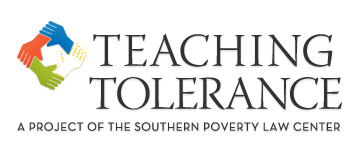Lesson Title: Shakespeare, Sonnets and Sexuality Subject: English Key Stage: 4 Date: 2020 Author: Paul Edmonson Download below KS4 English – Shakespeare’s Sonnets (you’ll need to unzip the file once downloaded by right clicking and selecting ‘extract all’)
English Lesson: Coronation Street Stereotypes
Lesson Title: Coronation Street (Stereotypes) Subject:English Overview: Learning objectives Get students to: • give individual responses to a written text (AT 1 and 2) • develop inference and deduction (AT 2) • understand more complex sentences (AT 3) • look at humour in writing (AT 1 and 2) • examine stereotypes (AT 1 and 2) […]

Editorial Cartoons: Gay Rights
Lesson Title: Editorial Cartoons: Gay Rights Age: KS3 Subject: English, Citizenship Overview: Activities will help students: understand how a cartoon uses idioms and puns (plays on words) to make a political statement interpret visual and written material in an editorial cartoon URL: http://www.tolerance.org/lesson/editorial-cartoons-gay-rights Country of Origin: US Misc: Related activities: Marriage Equality: Different Strategies for […]

Marriage Equality: Different Strategies for Attaining Equal Rights
Lesson Title: Marriage Equality: Different Strategies for Attaining Equal Rights Age: KS4/5 Subject: History, Citizenship Overview: This lesson focuses on the different means that the Constitution provides for people to bring about change. While each of the methods the lesson presents worked in the Civil Rights movement, all three are currently being challenged in the […]
Gender Variance Lesson Plan
Lesson Title: Gender Variance Age: KS5 (Could be adapted for KS4) Subject: History, Citizenship Overview: “The objective of this lesson plan is to teach students about the diversity of human sex and gender– both in terms of physically observable variations outside of a simple “Male – Female” model, and in terms of the many ways […]
Recent Videos
Recent Posts
- KS4 English – Shakespeare, Sonnets and Sexuality
 NO OUTSIDERS IN OUR SCHOOLS Teaching the Equality Act in Primary Schools & RECLAIMING RADICAL IDEAS IN SCHOOLS Preparing Young Children for Life in Modern Britain By Andrew Moffat
NO OUTSIDERS IN OUR SCHOOLS Teaching the Equality Act in Primary Schools & RECLAIMING RADICAL IDEAS IN SCHOOLS Preparing Young Children for Life in Modern Britain By Andrew Moffat PSHE – Alphabet Soup
PSHE – Alphabet Soup KS3 – PSHE – Shark Bait
KS3 – PSHE – Shark Bait KS4 – PSHE Omar: Young, Gifted and Gay 2 Part 1
KS4 – PSHE Omar: Young, Gifted and Gay 2 Part 1
Tags
SUBMIT YOUR OWN
COPYRIGHT STATEMENT
If copyright is claimed in any photograph which appears on this website, please contact us and we will happily remove it.
Subscribe / Connect
Subscribe to our e-mail newsletter to receive updates.


